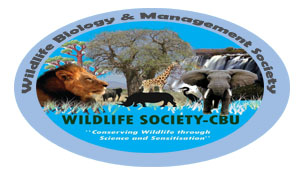 By Gilbert Mwale –
By Gilbert Mwale –
African wild dogs are simply carnivorous wild dogs. They live in packs, for instance in groups, from two to more than 50 dogs but most of them have about 12 to 20 adult members.
The scientists who study animals (zoology) are called zoologists. Each animal that is studied is classified, that is, split into descriptive groups starting with main groups (vertebrates and invertebrates) the families of animals are also included and the families are then split into species.
They are classified into the family canidae. This family is made up of 30-36 species of animals worldwide, but in southern Africa it is represented by the black-backed jackal, side striped jackal, bat-eared fox, cape fox and of course the African wild dog.
Biologists classify animals belonging to this family as canines.
The African wild dog, also called the hunting dog, is a vanishing species in East Africa.
Field studies have shown that the wild dog is a highly intelligent and social animal. Like most predators, it plays an important role in eliminating sick and weak animals, thereby helping maintain a natural balance and ultimately improving prey species.
The stereotype of the wild dog as a cruel butcher is slowly being replaced by a less harsh image.
Wild dogs live in packs of six to 20. If the pack numbers fall below six, hunting efficiency is eroded.
The dogs have a peculiar rather playful ceremony that bonds them for a common purpose and initiates each hunt. They start circulating among the other pack members, vocalising and touching until they get excited and are ready to hunt.
They start the hunt in an organised, cooperative manner. When prey is targeted, some of the dogs run close to the animal, while others follow behind, taking over when the leader is tired. They can run long distances, at speeds up to about 35 miles per hour.
They usually hunt in the early morning and again in late evening, prettying on gazelles and other antelopes, warthogs, wildebeests calves and rat and birds. They may raid domestic stock, but as wild dogs seldom stay in one place for long, this damage is not extensive
Throughout Africa wild dogs have been shot and poisoned by farmers, hunters and, at one time, by rangers who considered them as bloodthirsty raiders of livestocks and dispersers of wild herds. As the numbers of these wild dogs dwindle, they become more mysterious, elusive and enigmatic, reappearing suddenly in places they have not inhabited for months and then vanishing again a few days later. Even though protected in parks and reserves, wild dog populations have declined to the point that packs may no longer be viable.
In some areas they are close to extinction. Wild dogs fall victim to snaring, shooting, and speeding vehicles on roadways. Disease such as rabies and distemper may also threaten some wild dog populations.
Family Canidae
Lycaon pictus
Scientific Classification
Class: Mammalia
Order: Carnivora
Family: Canidae
Genus: Lycaon
Species: L. pictus
Quick facts
Scientific name: Lycaon pictus
Common name: African wild dog
Local name: Makanyani (Lozi).
Distribution: Southern Africa (Zambia, Botswana, and Namibia and South Africa).
Habitat: Open grasslands, woodlands and bushveld.
Size: Body length and shoulder height 61-78cm; Weight 17-36 kg with an average being 25kg.
Gestation: 69-72 days
Food: antelopes, kudus, impalas and springbok among others.
Threat: Habitat loss and human persecution are the main causes of decline
Did you know that?
No two wild dogs are marked exactly the same, making it easy to identify different individuals. Why such a pattern should develop, and how it serves the hunting dog, has long intrigued scientists.
Wild dogs are usually on the move over a very large range, covering for example, some 900 square miles in the Serengeti. After a litter is born, however, they will limit their travelling and hunting to areas closer to the den.
Share with us your experiences, comments and recommendations. Send emails to wildlifemgtsociety@gmail.com






